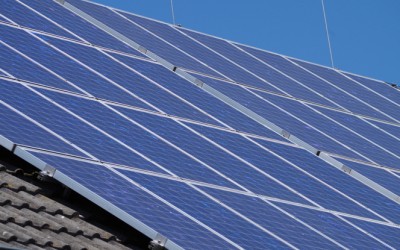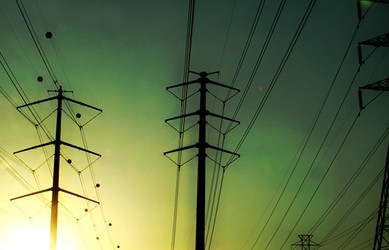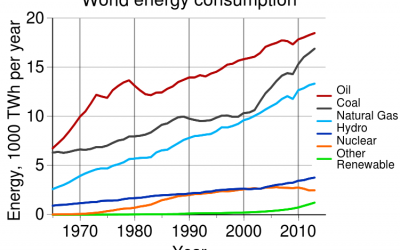Solar & Renewable Energy News
Solar Engineering and Photovoltaic News
National Safety Month: Professional Solar Installation Matters
While a DIY solar installation might appear as an attractive and viable option, over the long run, a proper installation by a professional solar engineering company will outweigh the perceived benefits of a DIY job. DIY solutions tend to gloss over the potential hazards of using eco-friendly options such as solar energy. In light of National Safety Month, homeowners should consider the prospect of involving reputable solar panel installers over DIY options. Below are three reasons why professional installers are the smart bet. 1. Efficiency DIY solutions usually involve trial and error. We all know that there’s little assurance when trying to complete a project while at the same time trying to learn the ropes. Not to mention, in most states it is illegal to install solar without proper licensing, permitting, insurance, etc. since you’re usually tapping into the electrical grid system. 2. Expertise Professional installers understand the nuances of solar power installation and the requirements needed for installing panels on different types of residential and commercial roofs. In addition to knowing how to use properly varying landscapes of a roof, professional solar companies implement shade analysis to make sure your solar system gets the maximum solar power absorption. 3. Cost A faulty DIY installation, such as incorrect wiring, may necessitate redoing the task, or worse, result in damage or fire. All it takes is one mistake to increase the cost of a solar job ten-fold. An incorrect DIY solar installation may lead to varying issues. roof leaks faulty wiring fire damaged shingles non-working solar panels poor solar power absorption due to excessive shade coverage Attempting to save money... read moreTidal Power: Harnessing the World’s Oceans
At some point, fossil fuels will run out. Society will then need a new selection of renewable energy techniques to be put into action. Luckily, there are several options. In addition to solar and wind, there is also tidal power. Tidal power, also know as marine or ocean energy, embraces a host of engineering technologies. These technologies utilize ocean movements to generate electricity. Some experts estimate that there is enough tidal power in the oceans to meet the entire world’s current consumption of electricity. Although ocean energy has proven itself as an invaluable tool to the world, it has yet to be embraced by the masses. Ocean Energy Timeline The first patents for wave-powered devices were issued in the 19th century. Some of the world’s first tidal barrages were put into place as far back as 1966 in France, and smaller scale operations began shortly after in North America and Asia. Due to expensive implementation cost, large scale magnitude has never been achieved. While tidal power had an increase of interest in the 70’s due to the 1973 oil crisis, it’s exploration decreased after oil prices re-stabilized in the 80’s. Only until recent years, when technology caught up a bit more, has the interest in tidal power re-emerged. Ocean Energy Today Now that technology has advanced, it seems that the main hurdle in front of tidal energy is competing with fossil fuels. While fossil fuel supplies will eventually run out, they are currently cheap and bountiful. Some countries have implemented initiatives to promote quicker adoption of renewable energies, tidal power and other. With the help of grants or subsidies,... read moreNikola Tesla and Modern Electricity
Nikola Tesla was arguably one of the most brilliant inventors in human history. Although relatively unknown for much of the 20th century, he left such remarkable contributions to the field of power generation. It seems as though he started to be properly recognized closer towards the 1990’s as technology caught up to his wisdom. Today is Nikola Tesla’s birthday. In honor of his extraordinary life, let’s take a glimpse at some of his notable contributions that influenced power generation. A Scientific Pioneer Nikola Tesla was active as an inventor primarily in the early 1900s. After working with electrical engineering in his native Serbia, he moved to the United States and took a job under the renowned inventor, Thomas Edison. Designer and Experimenter Tesla was a prolific conceptual designer and experimenter. He’s responsible for important technologies related to radio wave transmission and reception. As Nikola’s luck goes, much of history tends to remember his rival, Guglielmo Marconi, as the inventor of the radio instead. AC Power Generation Tesla continued learning and experimenting, eventually finding an interest in the field of power generation. As his work evolved, it became more notable, paving a way for his development of alternating current (AC) electricity systems. Tesla’s AC power systems, which is now widely used in the modern society. You may think that with pioneering modern electricity that he became filthy rich. Yes, it was a breakthrough, but he didn’t become rich. He sold most patents to George Westinghouse, a famous entrepreneur, for cash up front. By the time of his death, that cash was dried up. Ambitious and Determined Not content with AC... read moreHurricane Power
Atlantic’s Hurricane Season is here. Hurricanes and tropical cyclone activity starts as early as May, peak in late summer, and storms typically run through September. The sheer power of a hurricane is amazing. Did you know that an average hurricane produces most of its rain fill on the inner rotations than the outer area? Surprisingly, this rainfall is a greater source of energy than the wind of a hurricane. Most of a hurricane’s energy is released when converting water vapor into droplets. The energy of the rainfall produced by a hurricane translates into 200 times more electrical generating capacity than what the world currently produces. The kinetic energy from a hurricane’s wind is equal to nearly half of the world’s total electrical producing capacity. How much power does the world consume anyway? For 2012, the International Energy Agency (“IEA”) estimated that world energy usage equated 155,505 terawatt-hour. By far, the majority of that energy was produced from non-renewable energy sources, primarily oil, coal, and gas. Luckily, renewable energy grew the fastest based on a before and after percentage relative to previous usage. Considering how much power the world consumes, and a hurricane produces 200 times more energy than that, it’s amazing how strong one hurricane is. What if we could harness it for good as an additional form of natural energy? The possibilities would be... read moreIntersolar Conference
Intersolar is the world’s leading exhibition series for the solar industry where the world’s supplier and manufacturers meet to discover new advancements in solar technology. The dates for this year’s solar conference expo run from July 11 – 13 at the InterContinental Hotel San Francisco. Next month’s Intersolar Conference, which is the most attended solar exhibition in the country, will feature A-list speakers. Currently scheduled speakers include Tesla’s co-founder and CTO, JB Straubel, Fraunhofer Institute Director, Eicke Weber, CALSEIA Executive Director, Bernadette Del Chiaro, and New York State Senator, Kevin S. Parker. Popular discussion points are sure to focus around solar energy solutions, market growth, and advances in technology. solar permitting policies solar engineering solar feasibility studies PV design and many other solar system design related solutions The conference focuses on the B2B side of solar systems. This makes the conference a premiere attraction for solar consulting and design companies looking to be exposed to the latest literature on solar power. For more information on the conference visit intersolar.us. For residential solar design or commercial solar permitting, contact DBM Solar by calling 801-690-6517. DBM Solar is an advocate of solar energy, and we are comprised of a team of experienced designers with over 20 years combined photovoltaic and solar thermal... read moreUltraviolet Awareness Month
July is Ultraviolet Awareness Month, an initiative to encourage awareness of UV rays and their potential to be harmful to your health. Aside from health discussions, there is a positive site to UV rays; energy. Did you know that UV rays can generate power? A research group from the Kyoto Institute of Technology introduced a new photovoltaic cell that is capable of generating electricity from ultraviolet light. A multi-junction PV design cell could absorb and catch the entire spectrum of light. The group’s prototype has found a way to capture all that light using a single junction cell. MIT, via their startup, Ubiquitous Energy, is working on technology for transparent solar panels that harness power through UV, too. For a real-life application of UV technologies, Carbon3D offers a UV 3D printer. This 3D printer can reduce production time of 3D materials from hours to minutes. Just as technology advances in any industry, imagine what advancements in ultraviolet power generation could bring. Solar panels used to require being the size of a football field to produce enough energy to power a small building. Nowadays, the size of solar panels and become more compact and a single rooftop can power the house in which it rests upon. Continued development of UV technologies looks... read moreMaritime Day: Recognizing Tidal Energy
Created in 1933 and observed annually on May 22, National Maritime Day recognizes the maritime industry and its importance to commerce of the world. The day of May 22nd was chosen for its significance in 1819 as American steamship Savannah set sail on the first ever transoceanic travel via steam power. The wonder of steam power and maritime power, in general, is amazing. With advances in technology, time will provide for increases in water-based power generation like hydropower, tidal wave power, and even ocean-based solar grids. Additional instances of power generation via water will continue to support the growing demand for power in the world, all while minimizing climate impact from the burning of fossil fuels. A beautiful example of power-generation opportunities is tidal energy. Although it is not mainstream just yet, tidal energy has great potential for electricity generation in the future because of its predictability and measurability. Tides are more predictable than wind and solar energy because of the recurring flow of tides and stationary locations. With the successful introduction of solar power into mainstream society, renewable energies are more and more sought-after these days. By making use of natural heat or energy sources and converting them into power, current and future generations are distancing themselves from expensive utility bills from local power companies. Society is also on the right path to decreasing or eliminating their footprint on Earth’s climate. In recognition of Maritime Day, let’s recognize the beauty of technology. Two hundred years ago we celebrated the first transoceanic voyage. Generating and controlling steam power back then contributed to advances in harnessing energy that we take... read moreWhy We Need To Embrace Renewable Energies
Do you know where the energy we use is sourced from? Most of the energy that powers a home’s lights, tv, dishwashers, fridges, neighborhood lights, etc. is generated from fossil fuels. These are formed by natural processes through decomposition of dead organisms that are extracted from the Earth’s core and processed to generate power. Dead organisms? Yes. The three major fossil fuels are in the form of coal, oil, and natural gas. The formation of some of these energy sources even dates back further than the dinosaurs decomposition. Now, just think for a moment. The majority of the power that we have is from natural fossil reserves from millions of years ago. Imagine if it ever runs out. What took millions of years to create we may very likely exhaust in only two or three centuries. We may have some fossil fuels in reserves, and scientists have calculated that we have enough to use for our generation, but what about the next generation? Burning fossil fuels to generate power also has adverse effects on our planet. A big issue threatening life on Earth is climate change. The direct of climate change, believed to be influenced greatly by the burning of fossil fuels, are exemplified through loss of sea ice, accelerated sea level rise and longer, more intense heat waves. Some people also attribute an increase in hurricanes, floods and droughts to climate change as a result of increased greenhouse gases from the processing of fossil fuels. This is one of the major reasons why we need to start embracing renewable energies. Renewable energies are sourced from natural and abundant... read moreRapid Shutdown Switch NEC 609.12 2014
There are a few solutions to meet the new requirements of the NEC in regards the “rapid shutdown switch.” Click now for viable options.
read more







